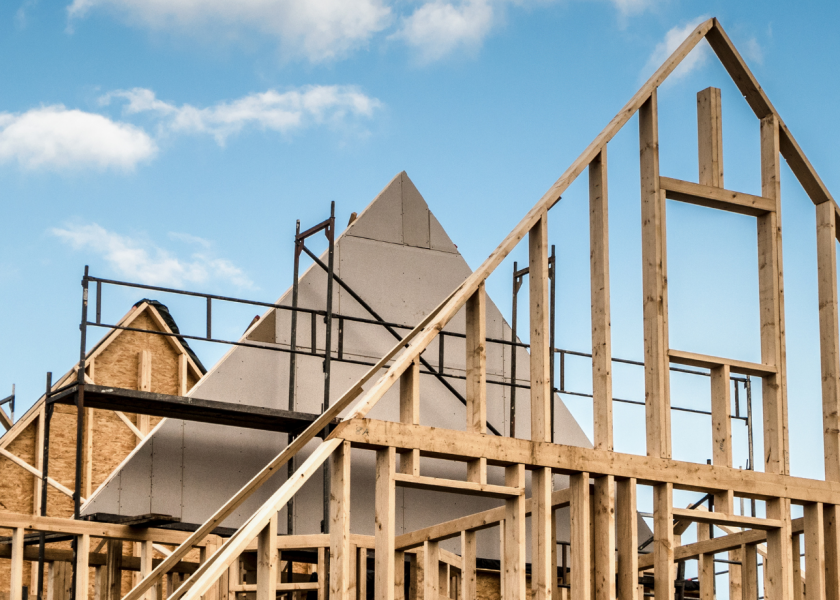Is timber the solution to the housing crisis?
18/11/2021

Local authorities throughout the UK are facing great difficulty as they attempt to rapidly increase their housing stock and deliver affordable homes, whilst also meeting environmental targets. Here, Andrew Carpenter, Chief Executive of the STA, discusses how timber frame construction provides the perfect solution, offering a sustainable, low-carbon method that can be delivered at pace.
The Climate Change Act 2008 committed the UK to reducing its carbon emissions by 80%, relative to levels recorded in 1990. In 2019, following advice provided by the Committee on Climate Change (CCC), the Government increased its target to a 100% reduction by 2050, or ‘Net Zero by 2050’. Whilst this ambition to improve the UK’s environmental impact is a welcome one, many are finding this target difficult to meet. At the time of writing, 74% of councils in the UK have declared a climate emergency. There is no single definition for what constitutes a ‘climate emergency’, most are proclaimed at a point in which a council believes it is no longer on track to meet Government climate targets, such as Net Zero by 2050. One issue that councils are particularly struggling to overcome due to environmental targets, is meeting the growing demand for housing.
The UK’s housing crisis is nothing new, in 2015 the Government set out an aim to build 300,000 homes a year to combat this. However, this target has not been met and recent estimations suggest that 345,000 new homes are now required to be built each year to overcome the backlog. The crisis is exacerbated further by the ever-increasing need for affordable housing. In the 2017 UK Housing Review Briefing Paper, the issue of affordability was described as “neglected” for both private and social housing. Today, local authorities are finding it difficult to balance producing homes at an affordable rate whilst also meeting environmental targets.
Many had hoped the Government’s Future Homes Standard document, would offer some guidance to house builders and local authorities on how best to overcome the numerous obstacles they have to navigate. Whilst some valid recommendations were made, structural timber and the wealth of environmental benefits it possesses were entirely overlooked. We believe that timber frame technology in particular can provide the solution to the sustainability, cost and demand issues facing local authorities.
Environmentally, the advantages of building with structural timber are vast. Firstly, when compared to its competitors, timber is the stand-out performer, possessing the lowest embodied carbon for any building material. Secondly, as long as forests are properly managed and maintained, timber provides us with the only truly renewable building resource. Thirdly, as they grow, trees sequester and store carbon from the atmosphere – meaning that throughout its lifecycle, timber has a carbon negative impact. Lastly, timber offers exceptional energy efficiency performance, greatly reducing household emissions – a positive for both the environment and the pocket of the homeowner. Aside from its environmentally beneficial properties, prefabricated timber frame technology could prove to be a great assistance to meeting the demand for affordable housing.
On average, using timber frame systems can reduce the construction time by eight weeks, when compared to traditional masonry methods. This is largely because timber frame is manufactured offsite and delivered as prefabricated panels that can be erected within days. Additionally, producing timber frame systems offsite massively improves reliability. Firstly, as they are produced in controlled factory environments, quality control is assured, resulting in fewer errors during assembly. Secondly, the fabrication of timber frame systems in a factory is not weather dependant, meaning build programmes become far more predictable. This speed of construction and greater reliability help to keep project costs low. With less labour required and fewer issues regarding quality, timber frame systems provide local authorities with the means to build more homes, at a lower cost.
Local councils are fighting a hard battle as they attempt to balance the demand for affordable homes while also meeting environmental targets. If they are to succeed, any attempts to solve this issue must include more widespread adoption of timber frame systems.
To find out more about timber frame, visit our website:
https://www.structuraltimber.co.uk/timber-systems/timber-frame